Examining Building K1: Insights into Dubai's Property Market
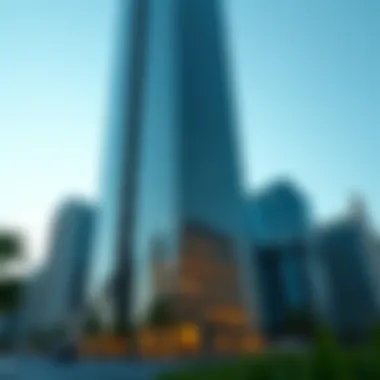
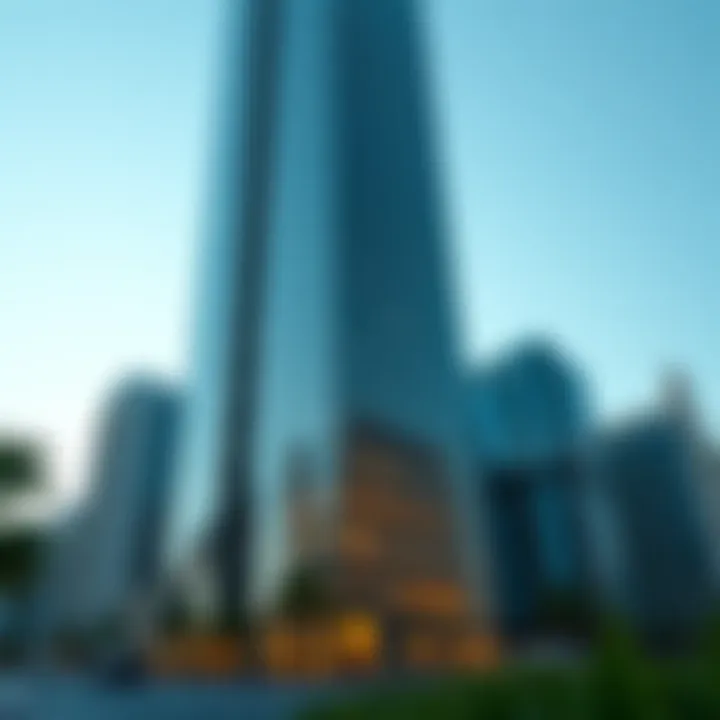
Intro
In the vibrant expanse of Dubai's ever-evolving real estate market, Building K1 stands as a noteworthy example. With its striking architecture and strategic location, this building is not just another structure in a bustling city—it embodies the aspirations and expectations of a rapidly growing economic landscape. This examination will serve as a detailed exploration into the intricacies surrounding Building K1 and its implications for investors, agents, and property managers.
Navigating the real estate terrain in Dubai requires a keen understanding of several factors—from architectural significance to regulatory frameworks. As we delve into the layers of Building K1, we'll uncover insights into its investment potential, design rationale, and market positioning. The examination also seeks to highlight trends that define Dubai’s property market, offering valuable perspective for those looking to make informed decisions in this domain.
By peeling back the layers, it becomes evident that Building K1 is not merely a product of construction; it reflects the economic and cultural aspirations of a global city. Thus, understanding this building helps place investors one step ahead in a competitive landscape, where knowledge is just as crucial as capital.
With that foundational knowledge, let’s move on to exploring the investment opportunities presented by Building K1.
Prelims to Building K1
Understanding Building K1 within the intricate web of Dubai's real estate market is not just about bricks and mortar. It encompasses the rich narratives that bind the past, present, and future of urban living in one of the world’s fastest-evolving cities. This case study aims to unravel the layers of significance tied to Building K1, exploring how its development has influenced its surroundings and the broader economic landscape.
Historical Context
Building K1 stands as a testament to Dubai's ambitious strides in architectural innovation and urban planning. The journey begins in the early 2000s when the city transitioned from a trade hub to a flamboyant icon of modernity. Initially, the plot of land intended for K1 was earmarked for industrial use, reflective of a bygone era when trade marked Dubai's primary identity.
As the city burgeoned, there was a collective vision to redefine Dubai not simply as a commercial center but as a global epicenter of luxury and architectural brilliance. Therefore, K1 was conceptualized amid this transformative climate, symbolizing a shift towards mixed-use developments that cater to a diverse demographic.
This evolution embodies broader historical trends in Dubai, where the intent to attract foreign investment and tourism is palpable. The area surrounding K1, once mostly uninhabited, is now bustling with businesses and residences, highlighting how one structure can substantially reshape a neighborhood’s identity.
Architectural Overview
The architectural prowess of Building K1 commands attention not only for its height but for the thoughtful integration of contemporary design and functional living. Designed by a globally recognized firm, its facade is a stunning blend of glass and steel, reflecting the shimmering skyline while maximizing natural light within.
K1 was conceived with both aesthetics and practicality in mind. The interior spaces boast high ceilings, open layouts, and eco-friendly materials, appealing to modern sensibilities and sustainability priorities. Furthermore, the structure includes thoughtfully designed communal areas, blending residential and commercial spaces to foster a vibrant community feel.
Here are some notable architectural features that contribute to K1's distinguished profile:
- Innovative Use of Materials: The use of lightweight, durable materials not only enhances energy efficiency but also reduces construction costs.
- Landscape Integration: Surrounding green spaces are designed for recreation and leisure, offering a sanctuary amidst urban hustle.
- Iconic Skyline Element: Its distinctive silhouette adds to Dubai’s skyline, serving as a beacon for locals and visitors alike.
With its blend of history and forward-thinking design, Building K1 represents more than a mere edifice; it encapsulates the essence of what Dubai signifies: ambition, community, and a future-oriented mindset.
Location Analysis
Understanding the significance of location within the context of real estate investment cannot be overstated. With properties like Building K1 in Dubai, location can be the make-or-break factor in determining its desirability, value, and potential for appreciation. Location analysis isn't just about the coordinates on a map. It ties into accessibility, local amenities, and the overall livability of an area—elements that collectively shape the real estate landscape.
A well-chosen location can bolster demand, allowing property values to soar while also providing a synergy with surrounding infrastructures. When investing in Building K1, it's crucial to consider how its location aligns with market trends and buyer preferences. Understanding these factors helps prospective investors gauge the property's potential and make informed decisions.
Proximity to Key Amenities
Proximity to crucial amenities forms a cornerstone of why buyers and renters opt for a particular location. In the case of Building K1, it’s nestled right in the heart of Dubai, surrounded by an array of conveniences that cater to both lifestyle and business needs.
- Retail offerings: Major shopping centers, like Dubai Mall, are just a stone's throw away, offering residents access to top-tier retail, dining, and entertainment options.
- Educational institutions: The building's closeness to reputable schools signifies that families considering a home nearby see it as a long-term option, enhancing its appeal and marketability.
- Healthcare facilities: Local hospitals and clinics add a layer of reassurance, knowing that essential health services are readily accessible.
All these amenities essentially elevate the lifestyle components available to residents, making Building K1 not just a place to live, but a thriving community cornered in the bustling city.
Accessibility and Transport Links
When examining investment viability, transport links hold equal weight to the amenities surrounding a property. Building K1 is well-served by various transit options, which is a fundamental selling point.
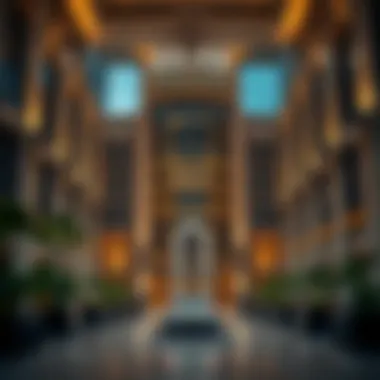
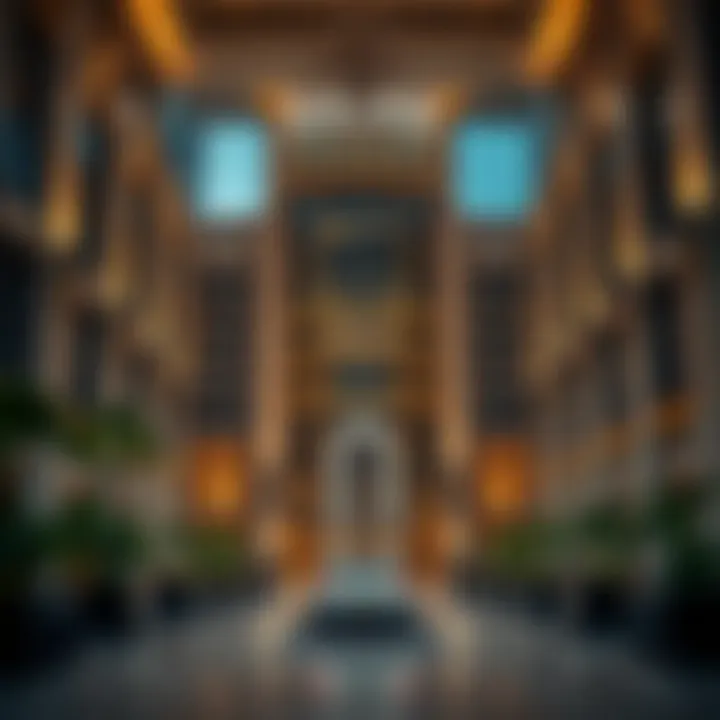
- Metro stations: Having a metro station nearby allows for seamless connectivity to various key locations, reducing reliance on personal vehicles and decreasing congestion in the area.
- Bus routes: Regular bus services contribute to the transport network, providing residents with multiple commuting options—ideal for both professionals and families.
- Road infrastructure: The building's positioning near major roadways boosts its accessibility, making commuting significantly easier. Moreover, such ease of transport is a critical factor that many potential tenants and buyers prioritize.
In summary, the accessibility and transport links further enhance K1’s sought-after status in Dubai's real estate market, thus aligning perfectly with the growing trends of community living and accessible urban centers.
Market Positioning
Understanding the market positioning of Building K1 is not just a matter of numbers and stats; it's crucial for both investors and real estate professionals aiming to navigate Dubai's complex property landscape. This section will detail how Building K1 sits in relation to its competitors, the influence of economic factors, and ultimately how it presents itself as an attractive investment opportunity.
Comparative Market Analysis
To grasp the value of Building K1, a comparative market analysis provides significant insights. This involves examining similar properties in the vicinity to understand pricing trends and demand levels. When we compare Building K1 to nearby entities like Burj Khalifa Residence and the Dubai Creek Harbour, certain trends emerge.
- Pricing: Building K1's pricing structure, while not the cheapest on the block, reflects its premium amenities and strategic location. Comparable high-end properties might ask for a premium, but K1 seeks to justify its costs through enhanced facilities and superior design.
- Occupancy Rates: Local occupancy rates can tell us quite a bit about desirability. Properties in Dubai Marina or Downtown Dubai typically showcase high occupancy rates. Tracking Building K1's rates against these can help identify its market traction and attractiveness to potential renters.
- Market Demand: By delving into buyer profiles—both local and foreign—one can evaluate demand dynamics. In recent years, interest from international investors has surged, thus affecting property values across the board. If K1 attracts a well-rounded demographic, it's a positive sign for its market positioning.
By strategically assessing these elements, investors can make informed decisions about whether Building K1 represents a viable opportunity.
Investment Viability
The investment viability of Building K1 hinges on several factors that savvy investors ought to consider. This isn't just about initial costs but a broader understanding of long-term returns.
- ROI Potential: Return on investment is a prime focus for any investor. With rental yields in Dubai hovering around 5-7%, Building K1 positions itself within this promising bracket. Furthermore, understanding the projected capital appreciation of the property is vital. Engagement with local market forecasts can shed light on how much value K1 might gain in the coming years.
- Economic Environment: The current economic climate plays a critical role. Given Dubai's resilience during economic downturns, properties like K1 might withstand market fluctuations better than others. Analyzing factors such as employment rates and foreign investment trends can provide context for stability.
- Regulatory Landscape: Compliance with Dubai's evolving real estate regulations is non-negotiable. Investors must assess how Building K1 fits within these frameworks—especially concerning ownership laws, taxes, and leasing regulations. Engaging with local legal experts might simplify this complex maze for potential investors.
"Investing in Dubai's real estate is not merely about bricks and mortar; it's about identifying the future landscape and positioning oneself accordingly."
Overall, the combination of these aspects paints a comprehensive picture of the investment viability associated with Building K1. By aligning with market dynamics, understanding comparative properties, and absorbing the economic narrative, investors can instill confidence in their decisions.
Design and Amenities
The section on Design and Amenities is vital for understanding how Building K1 stands out in the competitive Dubai real estate market. Investors and real estate professionals alike know that a property’s appeal often hinges on both its design and the amenities it offers. Therefore, examining these elements provides insights into the living experience that potential buyers can expect, as well as the value proposition from an investment perspective.
Interior Features
When one steps inside Building K1, the interior features immediately strike a balance between sophistication and functionality. The design philosophy here leans heavily on the concept of open spaces and natural light. High ceilings coupled with large windows allow daylight to flood the living areas, creating an inviting atmosphere that is as energizing as it is calming.
The choice of materials also speaks volumes. High-end finishes, such as polished marble floors and bespoke cabinetry, cater to the discerning tastes of potential occupants. Furthermore, smart home technology is integrated seamlessly into the living experience, giving residents control over lighting, temperature, and security at their fingertips.
Not to overlook, the layout of each unit prioritizes privacy while fostering social interactions. For example, the spacious living rooms are perfect for hosting gatherings, while bedrooms are strategically distanced to maintain tranquility. Building K1 clearly designates thoughtful attention to detail in both aesthetics and functionality, providing a living space that appeals to both families and individuals.
Building Facilities
Facilities within Building K1 cater comprehensively to a modern lifestyle. An essential aspect of the property, these amenities amplify its value and desirability. The fitness center exemplifies this approach: equipped with the latest machines and offering classes led by professional trainers, it creates an environment conducive for both those embarking on their fitness journey and seasoned athletes.
Moreover, the rooftop terrace provides panoramic views of Dubai’s skyline, making it an alluring space for relaxation or social events. Complementary to the recreational areas, a well-stocked library and co-working space also reside within the building, offering a quieter locale for concentration or individual projects. This multifaceted environment supports not only leisure but also productivity—elements increasingly desired in contemporary living.
The presence of concierge services adds another layer of comfort. Residents can access everything from housekeeping to restaurant reservations, ensuring that day-to-day needs are met with ease.
Ultimately, the design and amenities of Building K1 signify a keen understanding of luxury living in Dubai, prioritizing comfort and convenience in a bustling urban environment.
"The right design and amenities can transform a property from mere housing to an enriching living experience."
Legal Considerations
Navigating the legal landscape of Dubai's real estate market is fundamental for anyone involved with properties like Building K1. Understanding the juridical framework is not only about compliance but also about securing investments and minimizing risks. In this section, we will delve into the regulatory environment governing real estate transactions and the laws surrounding property ownership in Dubai, two critical aspects for investors and stakeholders.
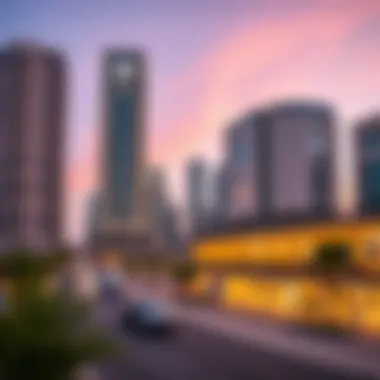
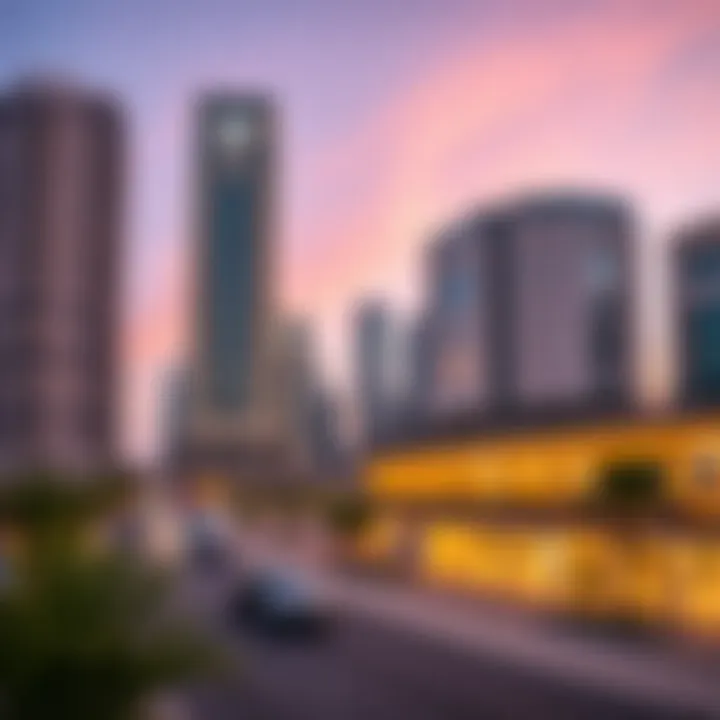
Regulatory Environment
Dubai's regulatory framework is extensive, tailored to create a robust environment for real estate investments. The Real Estate Regulatory Agency (RERA) plays a pivotal role in monitoring and implementing regulations that ensure transparency and fairness in property dealings. This agency operates under the Dubai Land Department and is responsible for regulating real estate activities. Some important elements include:
- Property Registration: All real estate transactions must be registered with RERA, providing a clear record of ownership and title, which protects both buyers and sellers.
- Investor Rights: Laws in Dubai stipulate various rights for property owners and investors, ensuring they are protected from unlawful evictions and providing recourse in the event of non-compliance by developers.
- Developer Regulations: Developers are required to adhere to strict guidelines regarding the financing of projects and the quality of construction. This helps in minimizing market volatility, fostering trust among investors.
- Dispute Resolution Mechanisms: RERA has established clear avenues for resolving disputes, which is crucial in reducing legal complications that can arise during property transactions.
Understanding these regulations is crucial. Not only does it prevent legal pitfalls, but it also assures investors about the legitimacy of their ventures.
Property Ownership Laws in Dubai
The laws surrounding property ownership in Dubai are marked by a blend of traditional practices and modern legal frameworks designed to attract foreign investment. The different ownership models entail:
- Freehold Ownership: Foreigners can own freehold properties in designated areas, granting them full rights to buy, sell, and lease. This model is highly appealing for investors seeking permanence in Dubai.
- Leasehold Ownership: This allows expatriates to hold property for a duration of up to 99 years. While it doesn’t confer complete ownership, it still presents a viable investment path, especially for residential units.
- Property Use Restrictions: It’s vital to be aware of the regulations governing how properties can be used. For example, certain residential properties cannot be converted for commercial use unless explicitly permitted.
- Cultural Considerations: Investors must also acknowledge Islamic law's influence on property transactions, especially concerning inheritance and ownership transfer. Such nuances are important in understanding the broader context of property investment.
"A clear understanding of ownership laws is not just a necessity; it’s a strategic advantage in Dubai’s vibrant real estate landscape."
All these laws highlight not only the opportunities available for investors but also the responsibilities that come with them. The more informed a buyer is about these legal intricacies, the better prepared they will be to make effective investment decisions.
Potential Risks
Considering the investment in a property like Building K1, it is vital to grasp the potential risks that could affect both current owners and prospective buyers. Real estate investments inherently carry uncertainties, and understanding them is key for anyone looking to make informed decisions. The following sections will discuss specific risks, notably market volatility and construction quality concerns.
Market Volatility
When observing the real estate landscape in Dubai, one can’t overlook the influence of market volatility. Every sector has its ups and downs, and real estate is no exception. The fluctuating nature of the market can stem from various factors, including economic downturns, changes in government policies, or even global events that ripple through the financial system.
For instance, property prices might surge when demand outstrips supply, but a sudden abundance of new developments can cool the market almost overnight. Investors eyeing Building K1 should understand this dynamism:
- Economic Conditions: A slumping economy can lead to decreasing property values.
- Market Dynamics: Shifting demands can alter investment landscapes swiftly.
Alex, a seasoned investor, mentions that monitoring economic indicators and upcoming regulations can aid in predicting a market dip or rise. It’s likened to feeling the pulse of a city’s financial health.
In summary, spontaneous changes can shake the foundations of property values, and it’s crucial to stay one step ahead. > "In real estate, knowledge is as valuable as the property itself."
Construction Quality Concerns
Next, we turn our gaze towards construction quality concerns, which can grasp any potential buyer by the throat. To secure a lucrative investment, ensuring that Building K1 meets higher construction standards is paramount.
Properties can appear splendid on the surface, but structural integrity is another kettle of fish. Loan providers and insurance companies are particularly attentive to how well a building was constructed, as subpar construction can lead to significant losses for investors if they must face repairs or even legal disputes. Here’s what potential buyers should explore:
- Material Quality: Low-cost materials can diminish the lifespan of the property.
- Building Inspections: Regular checks can identify flaws early on.
- Reputation of Builders: Researching the contractors involved can bear fruit in discerning quality.
Look into the track records of builders who have worked on Building K1. It’s like peeling an onion; you might unearth layers of details that reveal the quality beneath.
Ultimately, assessing these aspects can significantly mitigate risks associated with poor construction quality, ensuring that what stands today will still stand tomorrow.
Investing in Building K1 presents an opportunity, but acknowledging potential pitfalls will equip investors with the knowledge needed to navigate this complex landscape.
Community Impact
Understanding the community impact of Building K1 goes beyond mere numbers and architectural merit. The significance of this project lies in its ability to enhance the local environment, boost employment opportunities, and improve neighborhood services. As with many developments in Dubai, Building K1 carries the potential to influence not just its immediate vicinity but also the wider economic and social fabric of the city. Investing in such developments is not merely about a return on investment; it’s about laying a foundation for sustainable community growth.
Influence on Local Economy
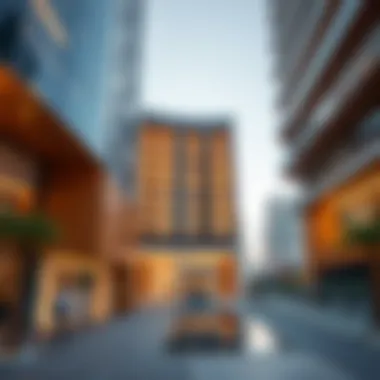
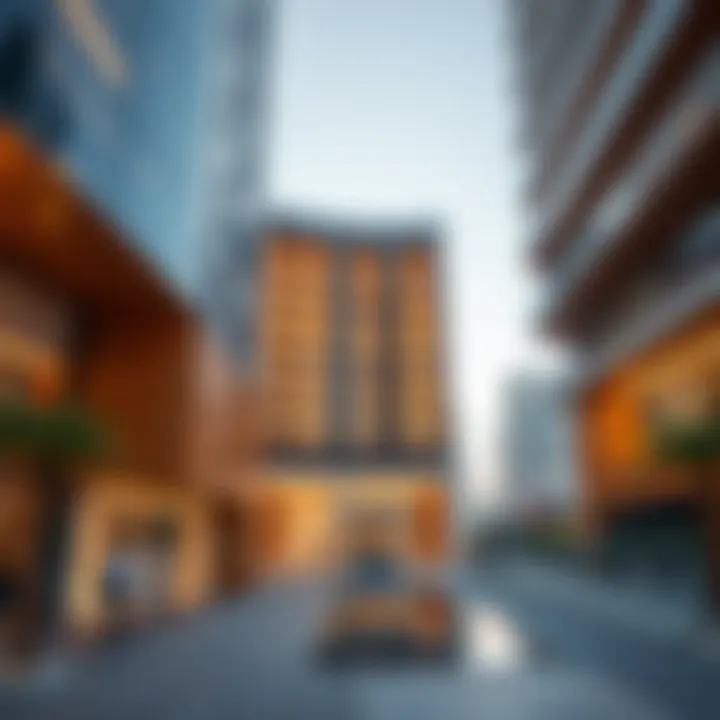
Building K1 serves as a microcosm of the broader economic trends in Dubai. This structure is not just another piece of real estate; it has a direct role in catalyzing economic activities in the surrounding area. Here are some key ways it plays into the local economy:
- Job Creation: The construction and subsequent operation of Building K1 is expected to create numerous jobs, from skilled labor in the construction phase to service positions once it is completed. This influx of jobs can alleviate unemployment rates and contribute to economic stability.
- Increased Foot Traffic: As a new facility, it attracts people, increasing foot traffic in the surrounding commercial areas. Local shops, dining establishments, and service providers may benefit significantly from this increase, leading to a flourishing local economy.
- Investment Surge: Properties like Building K1 often trigger a wave of investment interest from various sectors. Investors might flock to the area, prompting further development and improvements in infrastructure. This networking effect can encourage local businesses and even inspire new startups.
Understanding these elements helps investors grasp how Building K1 influences local economic dynamics, thus allowing for informed decisions.
Societal Implications
The construction of Building K1 has societal implications that ripple out, intersecting with demographics, community interaction, and the cultural fabric of Dubai. Societal impacts merit exploration because they can affect the living conditions of local residents, which is paramount for any real estate venture.
- Enhanced Amenities: With the introduction of Building K1, new amenities—including parks, recreational facilities, and communal areas—are likely to arise. These developments contribute not only to the quality of life for residents but also invite a more diverse community demographic.
- Cultural Integration: Building K1 could offer a venue that promotes cultural events and activities, fostering community cohesion. Spaces that promote public interaction can create a more vibrant community atmosphere, where residents come together, enriching social engagement.
- Strain on Resources: On the flip side, an influx of new residents and businesses can hike up the demand for essential services, including traffic management, sanitation, and public safety. Balancing such demands with the growth potential is crucial for long-term sustainability.
Ultimately, while Building K1 stands as a modern architectural feat, its influence on society and the local economy is what truly sets it apart. Focusing on these aspects allows potential investors and stakeholders to envision the full impact of such developments, leading to strategic investments that are not only financially sound but also ethically aligned with community growth.
Future Developments
The future developments surrounding Building K1 represent a crucial element not just for the immediacy of the building itself, but also for the broader context of Dubai's real estate landscape. Such developments hold the promise of enhancing value, accessibility, and appeal, particularly as the market evolves. Investors and property managers must pay attention to these elements, as they inform more than just investment strategies; they hinge on economic resilience and community coherence.
Forecasting Market Trends
Looking ahead, forecasting market trends connected to Building K1 hinges on several influential factors. Firstly, shifts in demand for residential and commercial spaces within the vicinity can signify larger impending transformations. Recently, movements toward mixed-use developments have caught the eye of developers. Such a shift signifies a burgeoning interest in integrated living that combines professional workspaces with residential conveniences. If trends continue in this direction, Building K1 could see an uptick in value, particularly if it incorporates flexible usage that appeals to both sectors.
"Cities thrive on adaptability. The foresight to adapt real estate projects to shifting market needs will play a key role in sustained relevance and profitability."
Additionally, the integration of smart technologies is becoming more prominent, with increasing focus on energy-efficient designs and automation in property management. Future developments related to Building K1 might need to incorporate these innovations if they want to stand out in a crowded market. This evolution circles back to an urgent need for stakeholders to stay abreast of such advancements to remain competitive.
Lastly, the impact of global economic fluctuations cannot be ignored. International investment trends may also play a critical role in shaping the future of Building K1, as foreign interests often drive local market dynamics. If the geopolitical climate remains stable, Dubai could very well become a preferred destination for investors seeking lucrative opportunities.
Sustainability Initiatives
As the global focus on sustainability sharpens, Building K1 is also positioned to benefit from green initiatives tailored to enhance its appeal and functional longevity. The growing demand for sustainable living spaces reflects a shift in consumer preferences that cannot be overlooked. Investors today must consider not just the financial returns but also the long-term sustainability of their investments. Initiatives targeting natural resource conservation, waste management, and energy efficiencies can significantly raise the building's profile.
One beneficial approach ties into the concept of creating green spaces. Surrounding Building K1 with parks or gardens not only supports community wellness but also establishes a visually appealing environment that enhances property value.
Moreover, securing certifications such as LEED (Leadership in Energy and Environmental Design) can act as a powerful marketing tool. This not only assures potential buyers of the building's commitment to sustainability but also puts it in line with emerging trends that prioritize eco-friendly choices.
In summary, the future developments tied to Building K1 offer much promise. By understanding market trends and embracing sustainability initiatives, investors and stakeholders can effectively position themselves to reap the benefits as the real estate landscape in Dubai continues to transform. The time is ripe to navigate these critical avenues with foresight and strategy.
Ending
The finale of any examination holds significant weight, and this conclusion synthesizes the multitude of insights gathered about Building K1 and its place in Dubai's vibrant real estate market. The analysis provided through this article enables readers to appreciate not only the architectural brilliance of Building K1 but also its situational significance. Throughout the various discussion points, from location advantages to community impacts, a holistic view emerges regarding the real estate landscape of Dubai, ultimately informing the decisions of potential investors and stakeholders.
Summary of Findings
The investigation into Building K1 reveals several key elements worth noting:
- Architectural Significance: The building is a fine blend of modern design and functionality, serving both commercial and residential needs.
- Market Positioning: Positioned in a strategic location, Building K1 is competitive in terms of pricing and amenities, making it an attractive option in the market.
- Investment Viability: Given the patterns observed in Dubai's growth, the investment potential appears robust, with projections suggesting a continued upward trajectory.
- Community Influence: The presence of Building K1 has spurred economic activity, fostering a sense of community within the vicinity, thereby enhancing its long-term value.
Overall, the takeaways from this case study highlight that Building K1 stands as a beacon in the skyline, embodying the best of what Dubai's property market has to offer while contributing positively to the locality.
Recommendations for Investors
For potential investors keen on capitalizing on the opportunities within the Dubai real estate sector, several recommendations can be drawn:
- Due Diligence: Always conduct thorough research on the market dynamics, as trends can shift unexpectedly. Analyzing local market conditions is paramount.
- Engagement with Local Experts: Collaborating with real estate professionals who know the ins and outs of the Dubai market can provide critical insights that may not be readily apparent.
- Long-term Vision: Think long-term when making investments. While short-term gains can be tempting, the real rewards often manifest with patience and strategic planning.
- Networking: Build relationships with other investors and stakeholders in Dubai's real estate community. Collaborating can lead to shared knowledge and opportunities that benefit all parties involved.
- Sustainability Focus: Given the growing emphasis on sustainable living, evaluating the sustainability initiatives associated with properties like Building K1 can yield a competitive edge in the future.
"Investing in real estate is not just about bricks and mortar; it's about understanding the broader context and being prepared for the journey ahead."
By following these recommendations, investors can not only mitigate risk but also position themselves favorably in a market that is ripe with potential.



